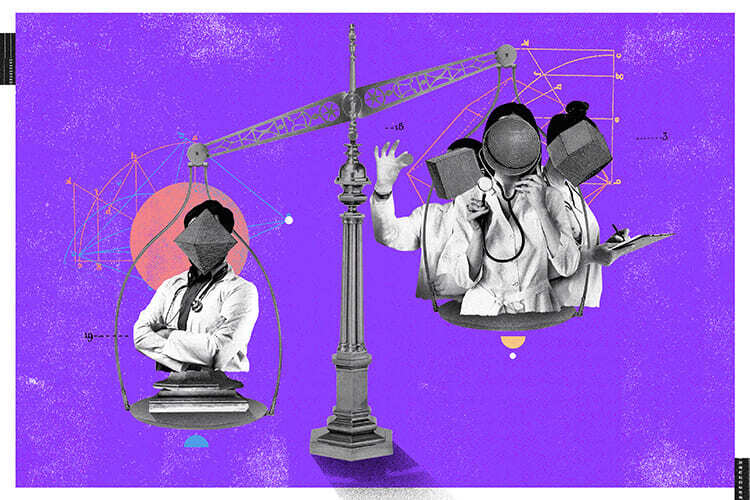Felicia Marie Knaul is an economist from Harvard University and a specialist in public policy in global health.
At the University of Miami, she serves as director of the Institute for Advanced Studies of the Americas and she is a tenured member of the Cancer Control Program at the Sylvester Comprehensive Cancer Center. From 2009 to 2015, Knaul was an Associate Professor at Harvard Medical School and Director of the Harvard Global Equity Initiative.
Her work has focused on improving living conditions and reducing inequalities in Latin America and the Caribbean.
In 2022, along with a team of researchers and specialists, Knaul published an article that explains why it is necessary to create better conditions so that women can be leaders in the sector.
For example, in Mexico, the Ministry of Health was established in 1943, and the first −and only− female ministry was appointed in 2012, but she only held the position for three years.
In an interview with TecScience, the expert talks about the importance of having more women in leadership positions in the health and medicine sector.
Women leaders in health
Why is it important for women in Latin America to be leaders in the field of medicine and health?
First things first: gender equality is a goal in itself. It’s something we should be looking for.
We are not going to achieve a health sector that produces what it needs to produce while we are living and depending on this type of inequalities, we have many Mexican men and women, many people in Latin America, but there is medical unemployment in all parts of the world, more noticeably in Latin America.
So, what you have is people without access to a doctor, male or female, and, at the same time, unemployed female doctors. That is a waste of all the investment that they, their families, and society made in their education.
But the lack of employment in medicine is just the tip of the iceberg, the pay gap that affects all women also affects female doctors, and discourages and devalues us as professionals.
Medicine is like a beacon, it has been the exemplary place of leadership in our societies and almost everything has been done by men. That has changed, at least at the level of those who study medicine, but not for those who practice it and those who are the leaders of the system. Today, the majority of students are women, but the majority of leaders are men.
And finally, I would say that this also has a lot to do with economic growth and poverty reduction, as well as reducing inequality, because health is an engine for economic growth.
What are the tangible consequences of not having women leaders in the medical sector?
One is unemployment. In medicine, this is not something that only women suffer, but we do suffer it much more than men. We analyzed the situation in Mexico a few years ago and we found that 30% of those who studied medicine, in general, did not work in the health sector as doctors, but when we unpacked that data, we found that 70% of that 30% of unemployed doctors was attributable to female doctors.
Another aspect is economic growth. If we could achieve equal participation of men and women in the health market, we would considerably increase the world economy. Data projected from 2015 to 2025 found that women could contribute an additional $28 trillion to the world economy.
If there is no parity in terms of labor rights, like maternity and paternity, for example, and while the sector continues to demand residences with very long hours and no rest, it will be impossible for a person to combine the study and practice of medicine with the goal of having a family.
So what happens? Women who studied medicine have to leave the job market and men who study medicine stay inside the job market, and we continue with the same problem.
Also, there’s an issue of intersectionality, what about women of color and indigenous women? I think we need to talk about layers of discrimination. The way in which discrimination is carried out is different; it is one layer on top of another, many related to poverty.
There are also very important studies on how the practice of medicine is biased against women. Generally, one thinks that women suffer pain in a different way than men, or that heart problems are more common to men than women, so there’s a probability that, when a woman comes in with pain and says, “maybe I’m having a heart attack,” they will say no, but if it were a man, they’d say yes.
This type of bias is also seen in terms of ethnicity and color and we are not going to solve this if we don’t open the practice of the profession to reflect what the needs of the population are in terms of health.
Long hours
How does this situation in Latin America compare with countries in the Global North?
We need more comparative studies, but we are seeing that the wage gap is seen in all parts of the world, but in Latin America, it can be a little more, it varies between 20% and 30% in general.
In other countries, economically more developed, there are more options, for example, for maternity and paternity, there are more labor rights. They seek equity and parity between genders, not only between men and women.
I also believe that, although it has taken a long time for the United States, they understand now that having residences for 24 to 36 hours without rest is not efficient, it is inhuman, and it leads to many different problems and mistakes. But it has taken a lot of time for the United States to get there and many countries in Latin America are still quite behind in this regard.
We are also behind in terms of work-life balance, I think it is being increasingly understood, but public policy has not advanced so much in developing countries.
Why is it especially difficult for Latin America to achieve gender equality in the field of medicine?
Machismo and discrimination against women are seen in different aspects of life, also seen in the practice of medicine. So, it has to do with a series of situations and ideas, but we can actively seek to finish them.
Things are changing, we have the famous glass ceiling that we have to crack. Once you manage to break it, change begins, but this has taken a lot of time in Latin America.
When you see the medical academies, it’s so impressive. The National Academy of Medicine of Mexico was founded in 1864 and it was not until 2019 that they have their first woman president. That’s 156 years, but we finally had one. So, I believe that these changes are small in numbers, but qualitatively very important.
I hope that we are already breaking this glass ceiling.

Leveling the scale
What was the path you followed to reach a leadership position in the health sector?
I am an economist, so I did not study medicine. My reflection is a little more as an economist than as a public health specialist. I wanted to work in public policy, and I had the great opportunity to participate in the health sector reform in the early 1990s in Colombia and later in the reform in Mexico, which taught me a lot.
But I looked for a non-traditional path for an economist who has a Ph.D. from a university like Harvard, I had zero interest in facing the job market and I decided to look for another way in Latin America and I had these fantastic experiences and opportunities.
What practical things can we do so that there are more women leaders in the health sector?
I think there are very specific things we can do, like labor flexibility. An example is adjusting residence hours for female and male internists who are studying medicine, so they can have the possibility of balancing life and work.
Two: we need to seek parity in labor rights, the most obvious field is maternity and paternity, but most paid and unpaid health care is done by women in conditions of severe inequality. We have to offer options so that men and women can rest and take care of relatives who are not children, depending on the needs of each family.
Third is mentoring. Women who have achieved a certain position in the health sector should and can be mentors to women who are seeking to build a career in health. And, in fact, we shouldn’t only mentor women, I think that women must be mentors for all those who study, we must support others to think differently about the priorities in their lives, about the importance of having gender equality. It’s a complete change in mentality and that is what we need to push forward.
Furthermore, I believe that not measuring is not knowing, and not knowing is doing nothing. If we don’t know, if we don’t face the reality in figures, we can’t tell the stories and we can’t achieve public policies that change our lives. So, we have proposed in the article that there must be some kind of observatory. The data exists, but it hasn’t really been worked on. This data could help us see if we are really getting closer to gender equity and other aspects of equity, like by race, color, or social class.
We have to look for changes from two trenches, not only in the practice of medicine but also in the teaching of medicine, from school, we need to encourage and support women to seek to be professionals. Having this type of observatory will help us push those public policies and see where we are going and correct ourselves along the way.















